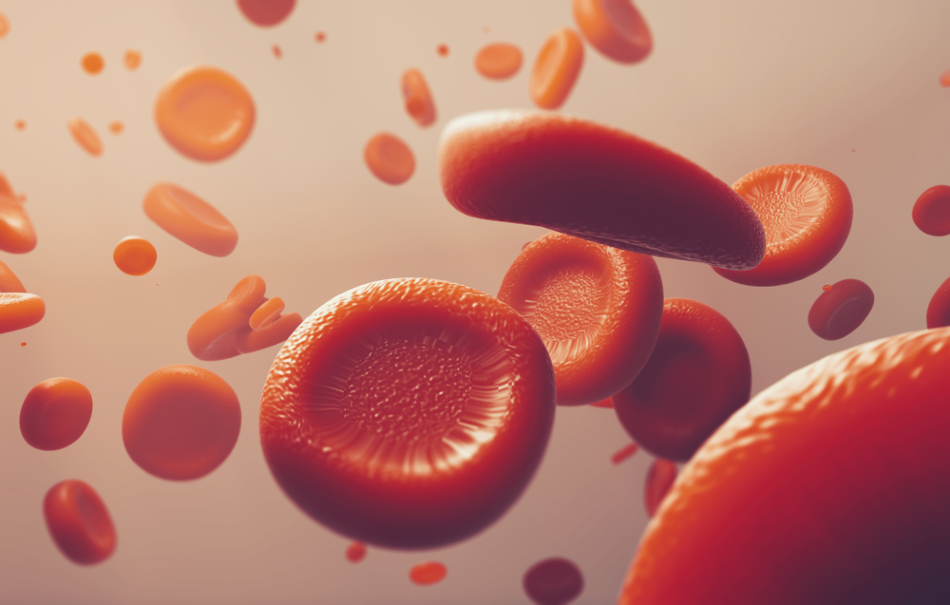UV-visible range microspectroscopy is an important method used for analyzing biological materials. In this experiment, red blood cells were studied with both UV range microspectroscopy and ultraviolet microscopy.

Image Credit: Shutterstock/r.classen
Experiment
The 20/20 PV microspectrophotometer from CRAIC Technologies is an ideal solution with a simple, quick and non-destructive way of analyzing biological materials. For these experiments, the 20/20 PV was configured for UV range absorbance microscopy and spectroscopy of single red blood cells.
Red blood cell samples on a calcium fluoride substrate were studied by absorption microspectroscopy and UV transmission micro-imaging. It was observed that some of the cells comprised approximately 1 µm diameter dark spots formed in the center of the cells. Measurement and comparison of cell spectra with and without dark spots was conducted.
For absorption microspectral analysis conducted with the 20/20 PV microspectrophotometer from CRAIC Technologies, 20 scans were averaged for each measurement and the spectral range was 250 to 850 nm. Imaging and spectroscopy experiments were conducted using broadband UV-visible-NIR light. Blank spaces on the sample substrate were considered as a reference.
The apertures used for microspectral analysis are tabulated below:
| Aperture |
Size |
| A6 |
1.5µm x 1.5µm |
| A5 |
3.2µm x 3.2µm |
| A4 |
6.5µm x 6.5µm |
Four FWHM bandpass filters centered at 415, 281, 267, and 232 nm in wavelength were utilized for imaging analysis.
Measurements
Measurements obtained from the 20/20 PV microspectrophotometer from CRAIC Technologies are given below.
Red Blood Cells with Dark Spots
A magnified image of a group of red blood cells from the sample slide is displayed in Figure 1. The observations made are as follows:
- The cells which are shown in square boxes were assumed to be the red blood cells having the dark spots
- The sampling area which is shown as a black square inside the central box has dimensions of 1.5µm x 1.5µm (A6)
- Above 500 nm, it is observed that the spectra show absorption peaks for a range of wavelengths
.jpg)
(a)
.jpg)
(b)
Figure 1. (a) Magnified red blood cells (b) spectra measured at dark spots of cells
Red Blood Cells without Dark Spots
In Figure 2 below, the red blood cells bordered by square boxes were considered to be cells that do not have the dark spots. The observations of the experiment are as follows:
- The cells spectra show absorption spectral peaks at 275 and 417 nm in wavelength
- An apparent spectral shoulder is displayed at a wavelength of 480~540 nm
.jpg)
(a)
.jpg)
(b)
Figure 2. (a) Magnified red blood cells (b) spectra from the cells
Microspectra Obtained with Varied Aperture Sizes
The next series of spectra displays compound localization within the red blood cells. The apertures that were used to collect spectra on red blood cells with dark spots only are tabulated and shown in the table below.
| Aperture |
Size |
Image positioning in the figure |
| A6 |
1.5µm x 1.5µm |
Upper right hand corner |
| A5 |
3.2µm x 3.2µm |
Upper center |
| A4 |
6.5µm x 6.5µm |
Lower left hand corner |
Observations made from the experiment are as follows:
- A6 covers only the central area of the cell
- A4 covers the entire cell
- The three spectra show the same absorption peaks
- The A6 spectrum shows an increase more than 600 nm in wavelength when compared with A4 and A5
- It is possible that the difference in spectrum results due to the cell edges
.jpg)
Figure 3. Series of spectra showing localization of compounds within the red blood cell
Microspectra of the Edge and Center of Blood Cells
The two graphs displayed below show spectra that were taken at the center and edges of the red blood cells which establishes the distinction of compounds within the cells. Here the A6 aperture was used.
a. Red blood cells with dark spots
The spectrum shown in the central area has an absorption peak at 275 and 417 nm in wavelength. The spectra show different curves at a wavelength above 500 nm.
.jpg)
Figure 4. Spectra for cells with dark spots
b. Red blood cells without dark spots
The spectrum in the central regions shows an absorption peak at 417 nm while the spectrum on the edges does not display any absorbance.
.jpg)
Figure 5. Spectra for cells without dark spots
Imaging analysis using the 20/20 PV microspectrophotometer from CRAIC Technologies:
The following images were taken at the same place as the sample slide. Imaging wavelengths were white light, 415, 281, 267, and 232 nm, respectively.
.jpg)
Figure 6. Whitelight imaging
.jpg)
Figure 7. 415 nm imaging
.jpg)
Figure 8. 281 nm imaging
.jpg)
Figure 9. 267 nm imaging
.jpg)
Figure 10. 232 nm imaging
Results
Absorption Microspectral Analysis Results
Absorbance spectra were obtained for red blood cells with and without dark spots and the results obtained are given below:
- Red blood cells with and without dark spots exhibit absorption peaks at 275 and 417 nm in wavelength
- Spectra for cells with dark spots show absorption peaks at different positions above 500 nm whereas they are absent for cells without dark spots
- The difference between peak amplitudes at 275 and 417 nm for cells not having dark spots is considerably larger than for cells having dark spots
- Spectra of the cells with dark spots in the central area display an increase in absorbance over 500 nm while spectra at the edges have reduced absorbance
- The central area spectrum shows an absorption peak of 417 nm for cells without dark spots while the areas at the edges do not show the peaks
UV Micro-Imaging Results
UV micro-imaging was conducted to study the red blood cells with and without dark spots. The results of the analysis are given below:
- At a wavelength of 415 nm, contrast enhancement of the cells is observed because of the heme group, which reflects the concentration and localization of the hemoglobin in the red blood cell.
- At a wavelength of 280 nm, proteins absorb light; hence UV imaging is considered as a rapid and precise technique for mapping protein distributions.
- UV micro-imaging also finds application in monitoring of nucleic acids as their maximum optical absorption wavelength is around 260 nm.
About Craic Technologies
CRAIC Technologies™ is the leading developer of superior instruments for UV-visible-NIR microanalysis. Spectra and images of sample features ranging from sub- micron to hundreds of microns can be analyzed. CRAIC Technologies products include UV and NIR microscopes, UV-visible-NIR microspectrophotometers, instruments to measure thin film thickness and colorimetry on the microscopic scale, Raman microspectrometers, automation solutions, traceable standards and more. Specialized systems have been developed for a number of fields including vitrinite coal analysis, protein crystals, forensic and semiconductor metrology.

This information has been sourced, reviewed and adapted from materials provided by CRAIC Technologies.
For more information on this source, please visit CRAIC Technologies.